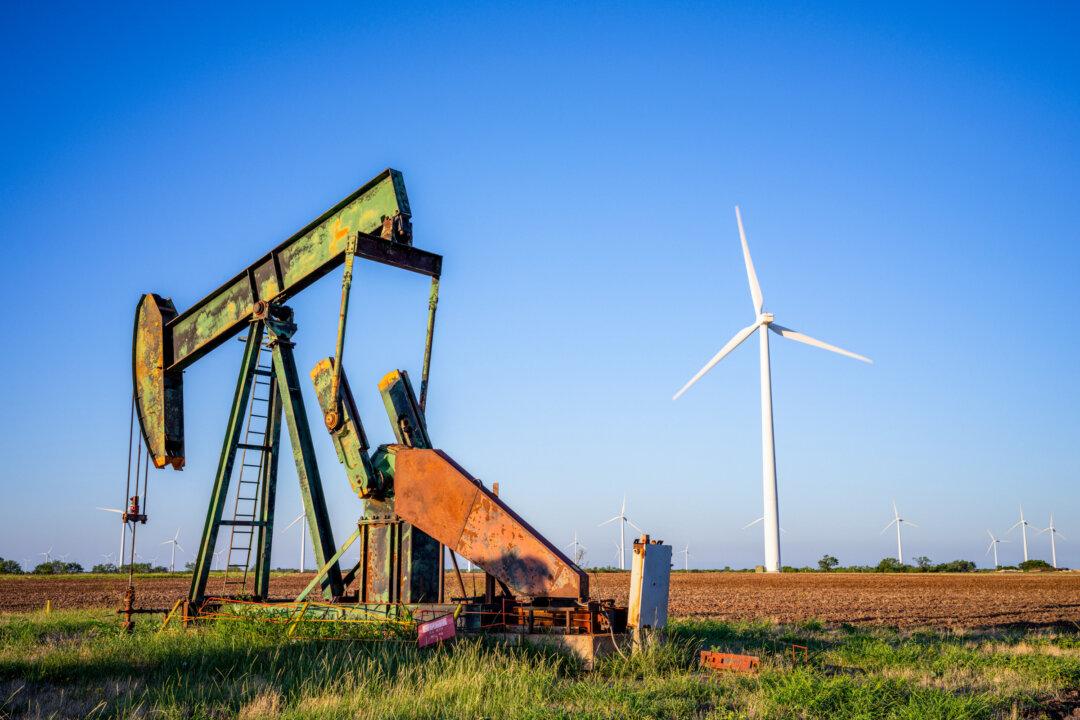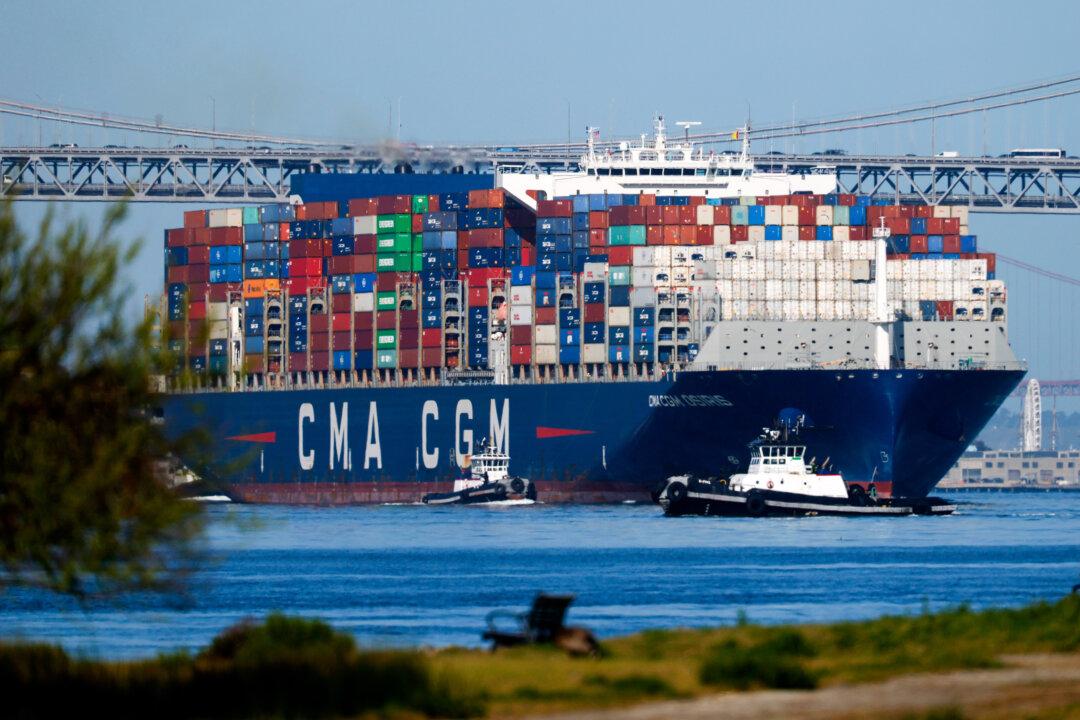MYAKKA CITY, Fla.—They hustled the herd from their stalls and into the open fields, where the cows would be safer from the storm, a practice honed during a half-century of dairy farming in Florida and Maine for a century before.
The massive steel-frame, metal-roof barns that housed Dakin Dairy Farms’s nearly 5,000 Holsteins could withstand winds of up to 70 miles per hour, Jerry Dakin said, but at “80 to 100, things start to come apart.”
When Hurricane Ian made landfall on Sept. 28 as a Category 4 storm with 155 mile-per-hour winds, first over barrier islands near Fort Myers and then at 4:35 p.m. in Punta Gorda, just 30 miles south of the dairy, Dakin said, “At some point, you put your trust in God.”
The cows and their spring-born calves would “stand against” Hurricane Ian, he said, within 250 acres of oak-ringed, bermed pasture carved into the sawgrass savannah.
“We put them outside,” said Dakin, the Florida Farm Bureau’s 2022 Florida Farmer of the Year. “We always put them outside.”

Ian thrashed the 1,200-acre dairy on its march northeast. At roughly 7:30 p.m., while assessing the wreckage in its wake—all six barns stripped of roofs, all silos toppled, machinery flooded—Dakin saw that the cows “were standing against it, standing along the fence-line” and appeared to have survived with few casualties.
“Never lost more than eight cows in a storm,” he said.
Six hours later, early on Sept. 29, a neighbor called and “said there were 30 dead [cows] along a fence-line,” Dakin said. Before arriving at the scene, more dead cows littered his way.
“I saw 30 more dead along another fence line. I have never seen that. They weren’t piled up, just laying all along the fence,” he said. “I’ve never seen anything this bad. I had to drive away from it.”
Three days later, on a bright, blue-sky Oct. 2, Dakin Dairy—one of only 52 remaining dairy farms in Florida—was abuzz with the labor of volunteers pulling shredded metal from inside the battered barns.
But amid the din of beginning again, the cows keep dying.
Courtney Dakin, who directs the dairy’s tour program, a popular Manatee County attraction for decades, said on Oct. 2, “We’ve lost 250 and still rising. I’ve never seen anything so catastrophic.”
Courtney Dakin, who’s Jerry’s cousin, said one of the other nearby Dakin dairies had lost 300 cows.

Most are dying from pneumonia, she said, describing milking cows as “easily stressed animals.” Several were electrocuted, farmhands reported, but none drowned. Those that perished during or immediately after the storm died, essentially, of fright.
Now, they’re enduring stress from that storm and challenging circumstances. Generators couldn’t keep pace in providing water to milking cows until power was restored to the area on Oct. 1, forcing the dairy to throw milk away.
The upheaval will take a toll on the cows “for four of five more days,” Jerry Dakin said. “They were so worn out. They are not as full as they need to be. We’re pumping feed into them.”
The dairy’s 35 employees are “all are safe, but some have lost everything,” according to Courtney Dakin.
“One lost three vehicles, several lost their homes,” she said.
Many are subsisting in flooded, compromised homes, Jerry Dakin said, noting that “people couldn’t get out of their own houses” for days because of flooded roads, including Interstate 75. Many of the dairy’s workers couldn’t get to the farm, some still can’t, he said.
Courtney Dakin put out a call on Dakin Dairy’s Facebook page for volunteers to help clear the barns and pastures of debris.
More than 100 people showed up on Oct. 1 from as far away as Plant City and Lake Wales, she said. On Oct. 2, about the same number were expected, including a busload of 30 from Ocala.
“My mind is blown away,” she said. “These people are showing up on our doorstep to help us when we really need it.”
Neighbor Bill Flach was pulling roof metal from under a collapsed silo that “the storm cured of corrosion” and said it was a terrible thing to see a cow “lay down and just die.”
He wasn’t surprised at the volunteer turnout.
“Jerry has helped so many. It’s his turn. Now he needs help. That’s why these people are here—a good neighbor needs help. We’re here,” Flach said. “This guy is not going to let this stop him, not a storm anyway, not Jerry.”
Courtney Dakin said the dairy is also collecting donations, anything and everything from bedding to food, at its cafe and shop. Details are available on the Dakin Dairy Facebook page.
The dairy’s food trucks have been delivering the donations to sites in Arcadia and North Port, “who are far worse off than us,” she said.
Lucia Granton, of Palmer Ranch, said she had gathered water and food to donate to some group helping hurricane victims.
“My heart goes out,” Granton said. “There are so many people who need help.”
When she heard that Dakin Dairy needed donations and volunteers, “there was no question in my mind—this is what I had to do today.”
Jerry Dakin estimated that the average worth of each lost cow is “about $1,800 each,” meaning just in livestock, the Dakin dairies could be looking at more than $1 million in losses.
It’s another blow to an increasingly difficult business, he said. In 2015, there were 130 dairies across the state where 123,000 cows produced approximately 277 million gallons of milk and generated $1.16 billion in revenues, supporting 6,288 jobs, according to the University of Florida’s Institute of Food & Agricultural Sciences.
As of Oct. 2, “there are only 52 dairies left, down from 350” at the turn of the century, according to Jerry Dakin.
“America has got to wake up. The day we can’t feed ourselves is the day we will be in trouble,” he said. “We need common sense federal regulation by people who actually understand the industry. We need help to do more to keep agriculture in the state of Florida.”
The same issues that have hamstrung the state’s dairy industry—rising land values, high equipment costs, financing issues, labor shortages, and a federal regulation that makes Florida milk among the nation’s most expensive—will continue to be challenges in the coming years.
As will hurricanes.
As he surveyed the barns, their roofs and walls bent and twisted and scattered about, Jerry Dakin said it will be a while before things are back to normal, so the dairy is “going to work on the basics” in resettling the cows and getting the dairy’s products onto grocery shelves.
“Can we even get materials?” Jerry Dakin asked.
Courtney Dakin said: “We’ll rebound. We’ll be back. But right now, the priority is to take care of the girls.”





